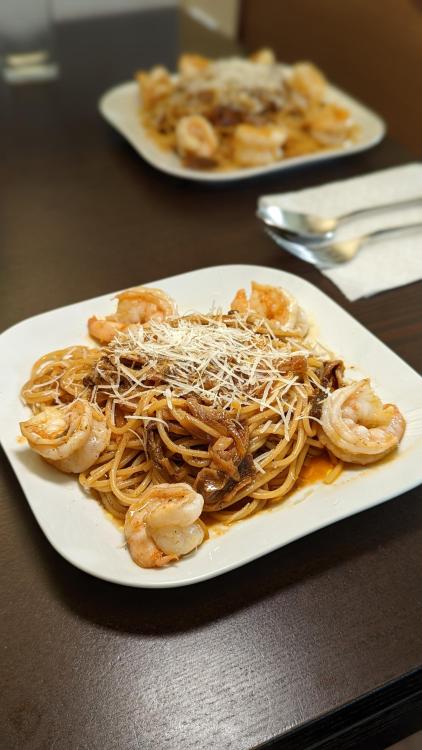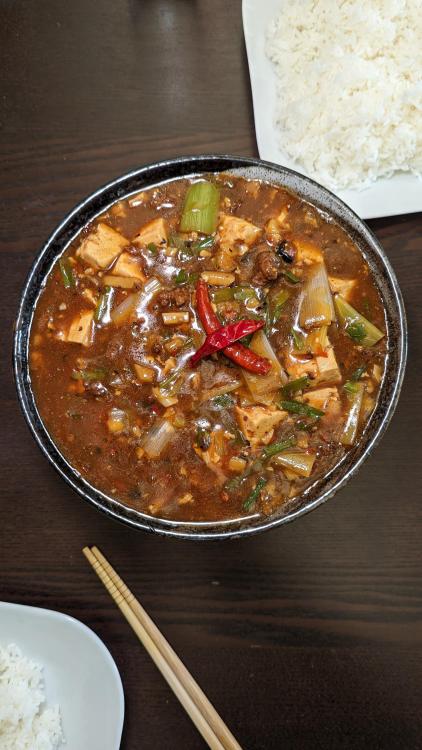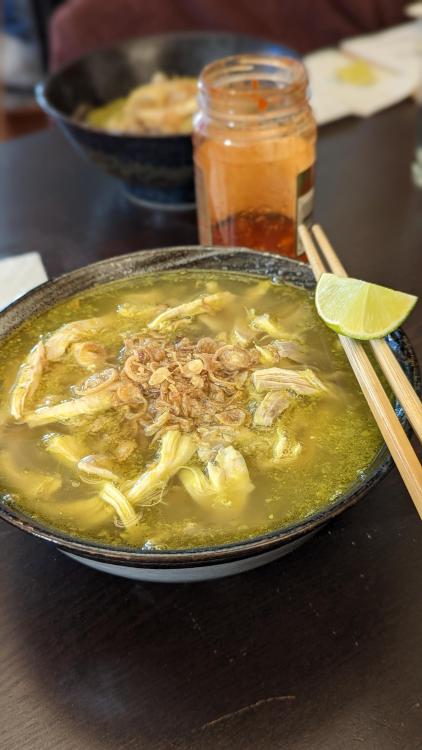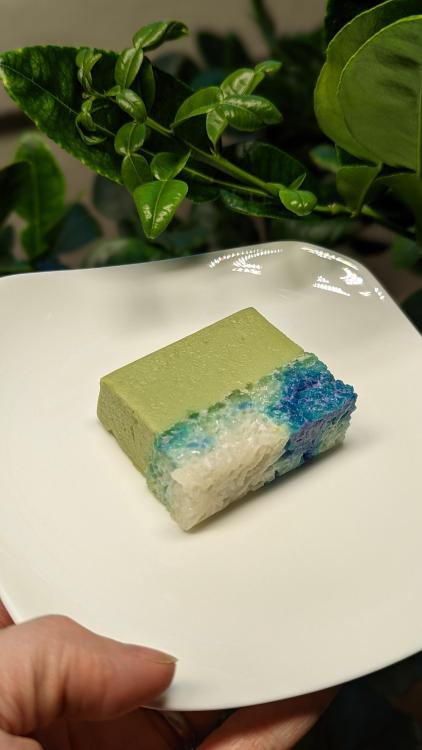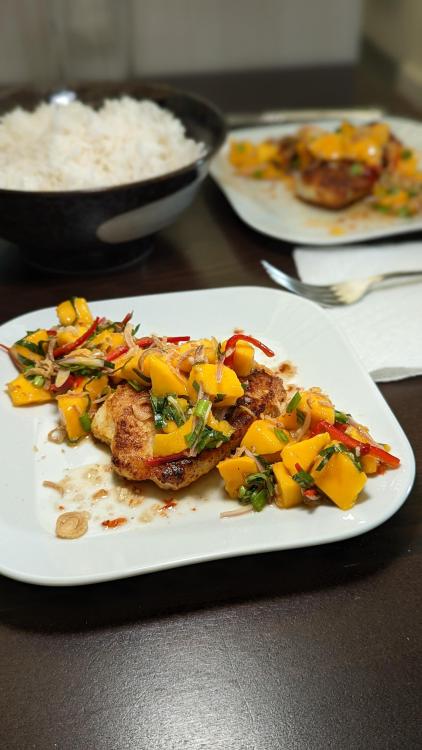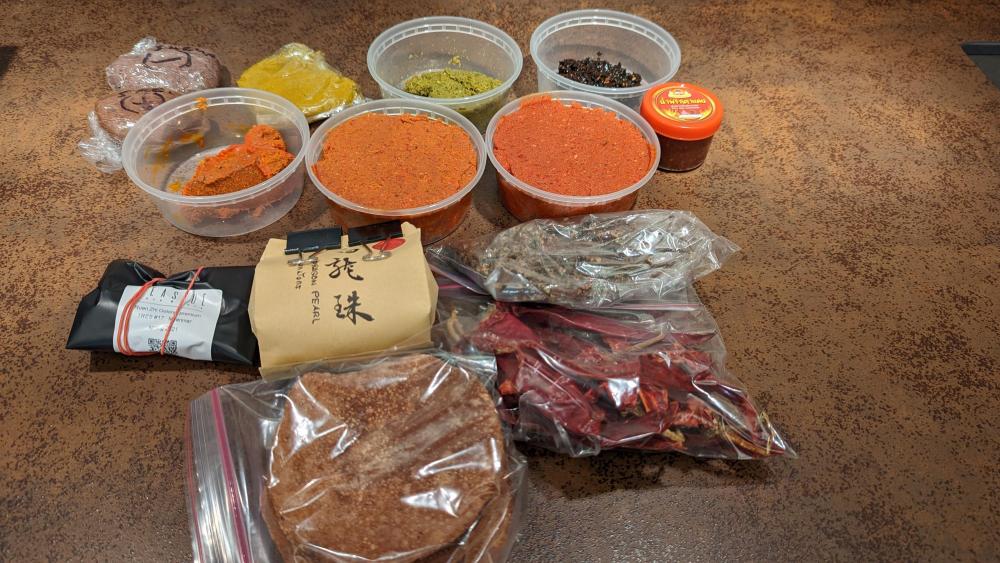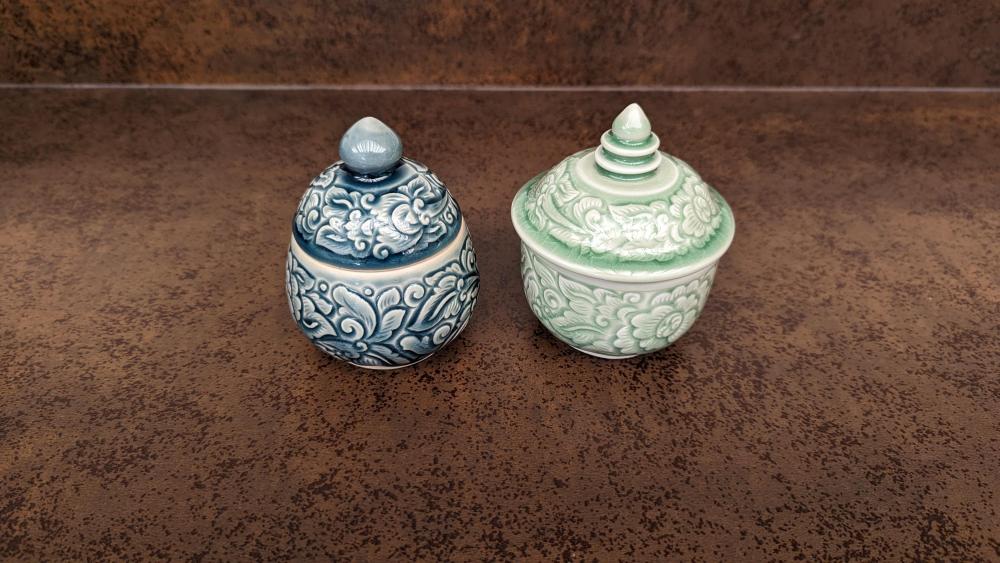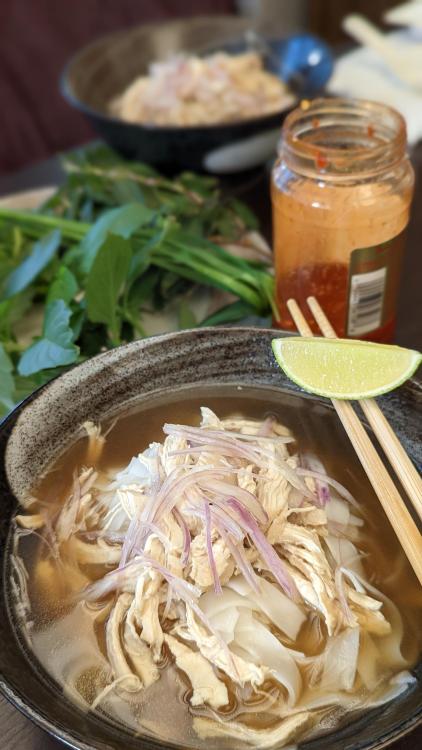
KennethT
participating member-
Posts
6,926 -
Joined
-
Last visited
Content Type
Profiles
Forums
Store
Help Articles
Everything posted by KennethT
-
- 869 replies
-
- 13
-

-

-
-
Interesting timing - I was just having a conversation about rice porridge and the names for it. Is zhou different from congee? Is congee the Cantonese name? I've also heard the word congee used by Taiwanese (admittedly on the airplane when I used to fly EVA to Asia) when speaking to English speakers - I don't know what they called it in Taiwanese.
-
yeah, I saw that - but that looks like a separate roaster from the chicken one
-
Yes, ground bison. We like it since it's a lot healthier than beef but not too expensive. And since I only use 1/4# of meat in this dish (and the bison comes in 1# packs) there will be bison burgers tomorrow!
-
That seems like a really big thing to cook 3 chickens at a time!
-
-
@ShelbyWhat are wild geese like? Are they as crazy delicious as farmed geese?
-
I wouldn't call them good - they were decent. They're the ataulfo mangoes grown in Mexico. I actually got these 2 weeks ago and they've been sitting in the root cellar (aka wine fridge). They're not even close to when it's mango season and I get a box from a grower in Florida but they'll do when desperate. They definitely needed the dressing though.
-
-
That is seriously unfair. Your hospital has me drooling. I can't get anything like any of those for less than $20 here....
-
It's doubtful that I am more perceptive. In fact, there are times I think I am down right obtuse!!! (or maybe oblivious would be a better word). But while there were plenty of duck dishes on the app, I think this is the first time he's ordered one. I didn't go back to recheck so I could be completely off base.
-
agreed. I think the comment was referring to my comment how I'd try to get into that hospital just for the food.
-
As @liuzhouhas said in the past, duck is the cheapest meat in that area, but for us the West, it's considered a luxury item...
-
I'm thinking about checking into this hospital just for the food.
-
I was actually thinking of this as I was typing before - the photos have nothing to show scale, but for some reason, it seemed like they were about 2.5 inches in diameter. Sorry for the confusion - I was talking specifically about the char siu bao and the fact that every place I've eaten them in HK (at least 10 different times) looked very similar. All the vendors in NYC Chinatown look similar as well, but that could be because the original Chinese people in Chinatown in NYC were from HK. Right - again, I was specifically talking about the char siu bao and the size of the pork pieces. I understand that many bao use a ground/mince filling, but I orignally thought that there was some sort of standard for char siu bao since they were all so similar in my experience. Granted, I have no char siu bao experience in Guanxi or mainland China in general.
-
The char siu bao looks very different than I'm used to seeing, both in Hong Kong and in Taiwan (in an airport restaurant). In those places, the bao are bigger and the top is snipped prior to steaming so it looks kind of like a flower. There is a lot more filling as well, with pieces of pork measuring maybe 1-1.5cm3.
-
Oh yeah. This kind of haul was comletely unexpected. I knew she was going to bring back some curry paste - we had discussed how to pack it so it didn't stink up her luggage but I didn't expect 5 different ones plus all the rest!
-
My friend came back from Thailand and all she brought me was 5 different curry pastes, 2 chilli pastes, 2 shrimp pastes, 2 loose leaf teas, and some impossible to find spices... Oh, and some celadon pottery
- 667 replies
-
- 19
-

-

-
Southern style pho ga (hence the bush of herbs in the background - I only had 4 different kinds today), spiced with star anise, coriander and cinnamon. Used very wide banh pho - it was the only thing I had! How did that happen???

